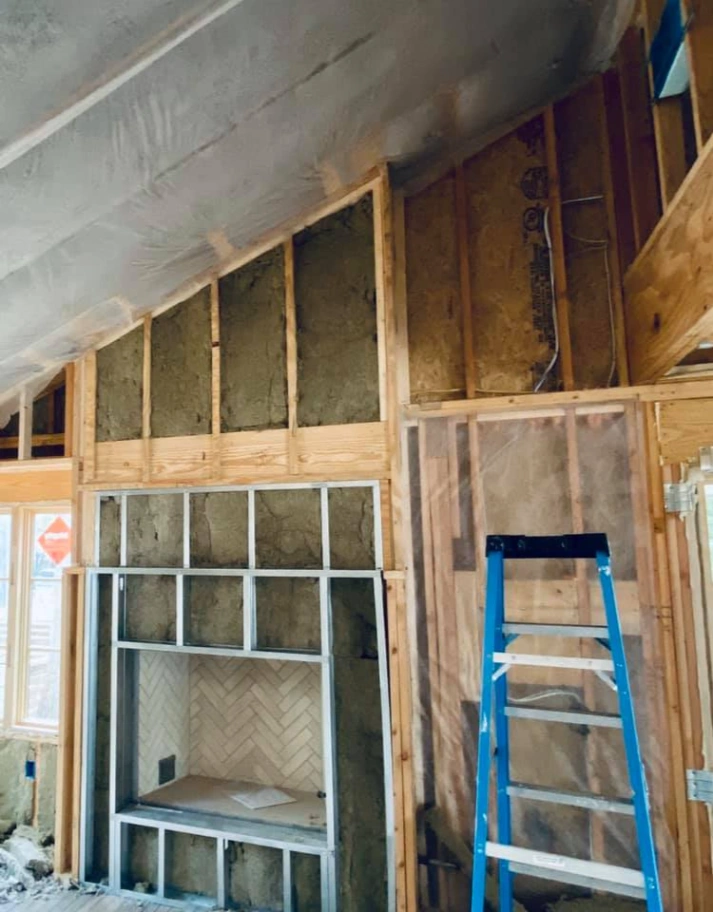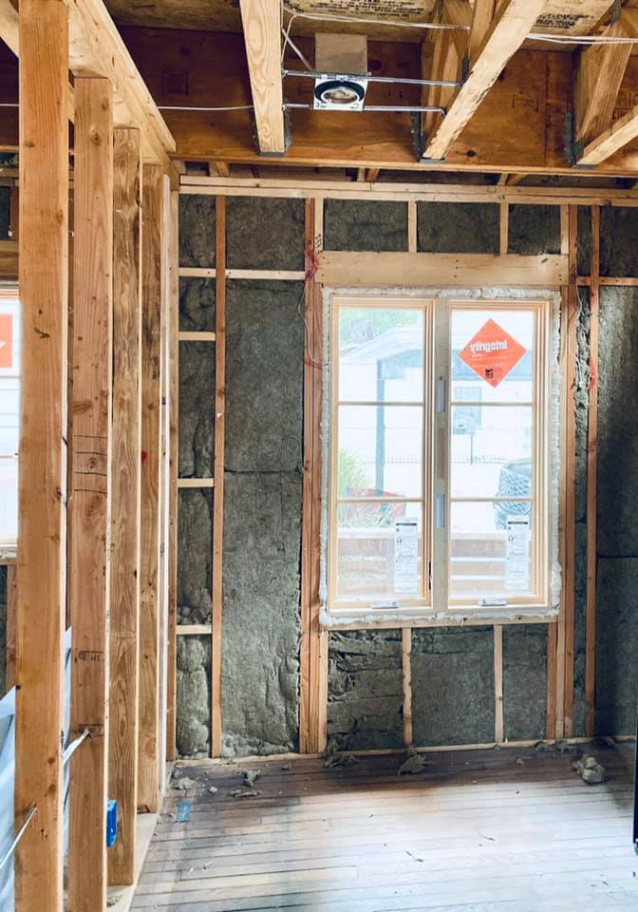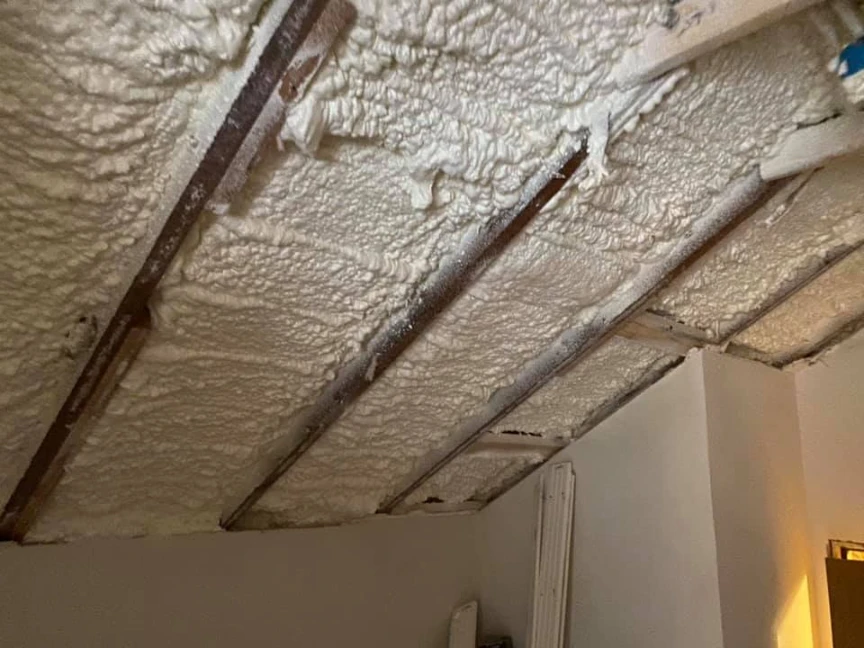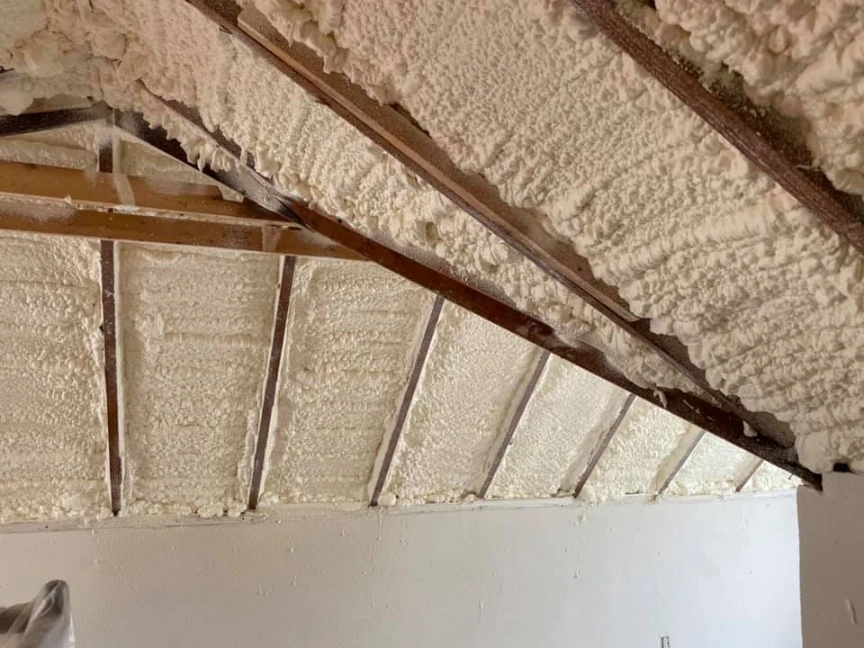Insulation stops drafts in large commercial buildings by creating a complete and continuous air barrier within the building envelope. This barrier controls unwanted air movement, known as infiltration and exfiltration, which is the primary cause of drafts. In tall structures, this is especially important for countering the “stack effect,” a phenomenon where warm air rises and escapes through the upper levels, pulling cold air in at the lower levels. By sealing the gaps, cracks, and voids in a building’s structure, a properly installed insulation system effectively stops this cycle of air exchange, leading to a more stable and comfortable indoor environment.
This article breaks down the science behind how air moves through commercial structures and explains the specific ways insulation acts as the first line of defense against drafts. The information here is based on years of practical experience diagnosing and solving air leakage problems in commercial properties of all sizes. Understanding these principles is the key to creating an energy-efficient and draft-free building.
Understanding Air Leakage in Commercial Structures
Drafts are more than just a comfort issue; they are a sign of uncontrolled air leakage. In commercial buildings, this leakage is driven by pressure differences between the inside and outside. According to the U.S. Department of Energy, air leakage can account for up to 40% of the energy used for heating and cooling a typical commercial building. The main forces behind this leakage, as outlined by the National Institute of Building Sciences, are the stack effect, wind, and mechanical systems.
The stack effect is the most significant driver in multi-story buildings. It works like a chimney:
- Warm Air Rises: Heated air is less dense and naturally rises.
- Exfiltration: This warm air finds exit points in the upper floors, such as gaps around windows, roof vents, or penetrations in the building envelope.
- Infiltration: As air leaves the top, it creates a vacuum or negative pressure at the bottom of the building. This pressure pulls cold, unconditioned air in through any available opening on the lower floors, creating noticeable drafts.
Wind pressure also plays a part. Wind hitting one side of a building creates positive pressure, forcing air in, while creating negative pressure on the opposite side, pulling air out. Finally, the building’s own HVAC system can create pressure imbalances if not properly balanced, contributing to air leakage.
The Role of Insulation as an Air Barrier
While most people associate insulation with its R-value, which measures its ability to resist heat flow, its role as an air barrier is just as important for draft prevention. An effective air barrier must be continuous and cover all six sides of the building envelope without any gaps.
Some insulation materials are inherently better at this than others. Spray polyurethane foam (SPF), for instance, is applied as a liquid that expands to fill every crack and crevice, creating a monolithic, airtight seal. This application method makes it extremely effective at stopping air movement where it starts.
In contrast, insulation types like fiberglass batts or rigid foam boards can be less effective against drafts if not installed with extreme care. Any gap between insulation batts or any unsealed seam between rigid boards becomes a pathway for air to bypass the insulation entirely. This reduces not only the building’s comfort but also the effective R-value of the wall system.
Bonus Tip: A simple way to spot potential air leakage is to inspect penetrations. Check where pipes, conduits, and ductwork pass through walls and floors. These areas are often poorly sealed and are major sources of drafts that a proper insulation and air sealing strategy can fix.
Common Trouble Spots for Drafts in Commercial Buildings
Identifying where drafts originate is the first step to solving the problem. In large commercial buildings, air leaks are commonly found in predictable locations due to the nature of their construction.
- Roof-to-Wall Connection: The joint where the roof assembly meets the exterior walls is a complex intersection of different materials and is often a major site for air leakage.
- Curtain Walls and Windows: The perimeter of window frames and curtain wall systems must be properly sealed. Over time, gaskets and sealants can fail, creating pathways for air infiltration.
- Building Foundation: The connection between the foundation and the ground floor walls is another critical area, especially for bringing in cold air at the base of the building.
- Utility Penetrations: Openings for plumbing, electrical wiring, and HVAC systems are frequent culprits. Without a tight seal, these act as direct conduits for outside air.
- Loading Docks and Entrances: Large, frequently opened doors are obvious sources of drafts, but the seals around them when closed are just as important. Worn or damaged gaskets can allow for constant air leakage.
Comparing Insulation Types for Air Sealing
Not all insulation performs equally when it comes to stopping air movement. The material’s air permeability and the installation method are the two biggest factors. The table below compares common commercial spray foam insulation materials based on their ability to function as an air barrier.
| Insulation Material | Air Permeability | Installation Method | Effectiveness as an Air Barrier |
|---|---|---|---|
| Closed-Cell Spray Foam | Very Low (Impermeable) | Sprayed-in-place liquid | Excellent. Creates a continuous, monolithic air and vapor barrier. |
| Open-Cell Spray Foam | Low (Permeable to vapor) | Sprayed-in-place liquid | Excellent. Fills all gaps to stop air, but allows moisture to pass through. |
| Rigid Foam Boards (XPS/EPS) | Low | Mechanically fastened | Good, but only if all seams and joints are meticulously taped and sealed. |
| Fiberglass Batts | High (Permeable) | Friction-fit between studs | Poor. Does not stop air movement on its own; it requires a separate air barrier. |

Things to Consider Before Upgrading Insulation
Making the decision to upgrade a commercial building’s insulation requires careful planning. Several factors will influence the best course of action.
Building Code Requirements
Modern energy codes are stricter than ever regarding building airtightness. The International Energy Conservation Code (IECC), for example, sets specific standards for air leakage that new commercial buildings must meet. A report from the International Code Council highlights that these codes are continually updated to push for higher energy efficiency, making air sealing a mandatory part of construction and major renovations.
Building Age and Construction Type
The age and construction style of your building will dictate the challenges. A historic brick building will have very different needs and potential air leakage points than a modern steel-frame structure with a glass curtain wall. The existing materials and accessibility will determine which insulation solutions are feasible.
Professional Air Leakage Testing
Before investing in new insulation, a professional energy audit that includes a blower door test is a smart move. This test depressurizes the building to measure the overall rate of air leakage and uses tools like smoke pencils or infrared cameras to pinpoint the exact sources of drafts. Professional organizations like the Air Barrier Association of America have established standardized testing protocols to ensure that these measurements are accurate and repeatable. This data allows for a targeted approach, ensuring resources are spent where they will have the most impact.
Bonus Tip: For large facilities, consider a phased approach. Use the results from the blower door test to prioritize the leakiest areas first, such as the top floors or the side of the building that faces prevailing winds. This can provide a faster return on investment and noticeable comfort improvements.
A Draft-Free Building is an Efficient Building
Ultimately, spray foam insulation prevents drafts by creating an airtight seal that separates the conditioned indoor space from the outdoors. This is especially important in large commercial buildings where pressure differences from the stack effect and wind can drive massive amounts of uncontrolled air leakage. By focusing on creating a continuous air barrier, building owners can greatly improve occupant comfort, reduce energy costs, and protect the structural integrity of the property.
Before starting any project, it’s best to get a professional assessment to understand the unique dynamics of your building. Identifying the specific causes and locations of air leakage will ensure that the chosen insulation solution delivers the best possible results.
Get a Professional Building Assessment
A thorough evaluation is the first step toward a more comfortable and energy-efficient building. The team at Stellrr Insulation & Spray Foam provides comprehensive commercial building assessments to identify sources of air leakage and recommend effective solutions. To schedule an analysis for your property, call (512) 710-2839. A properly sealed building envelope is the foundation of long-term performance and savings.
Sources
- National Institute of Building Sciences – A resource that provides detailed technical guidance on building design and construction, including comprehensive information on air barrier systems.
- International Code Council – The organization responsible for developing the International Energy Conservation Code (IECC), which sets standards for building airtightness.
- Air Barrier Association of America – An industry association that provides standards, training, and certification for air barrier materials and installation, ensuring quality control in commercial construction.
Questions About Insulation and Air Sealing
How is air leakage measured in a commercial building?
Air leakage is measured using a large-scale blower door test. This involves mounting powerful, calibrated fans in an exterior doorway to pressurize or depressurize the entire building. The test measures the volume of air moving through the fans at a specific pressure, which quantifies the building’s overall airtightness in cubic feet per minute (CFM).
Does a higher R-value mean better draft prevention?
Not directly. R-value measures resistance to heat transfer, not air movement. You can have insulation with a very high R-value, like thick fiberglass batts, but if it’s installed with gaps, air will flow right around it. An effective air barrier is what stops drafts, and some insulation types, like spray foam, provide both a high R-value and an excellent air barrier in one product.
Can adding insulation make indoor air quality worse?
If a building is made too airtight without providing a way for fresh air to get in, it can potentially trap pollutants and moisture inside. That’s why modern building science pairs a tight building envelope with controlled mechanical ventilation. An Energy Recovery Ventilator (ERV) or Heat Recovery Ventilator (HRV) can bring in fresh air while recovering energy from the outgoing exhaust air.
What is the difference between an air barrier and a vapor barrier?
An air barrier controls the movement of air, while a vapor barrier (or vapor retarder) controls the diffusion of water vapor through a material. They manage two different physical forces. Some materials, like closed-cell spray foam, are effective at both, serving as a comprehensive solution for controlling heat, air, and moisture.




